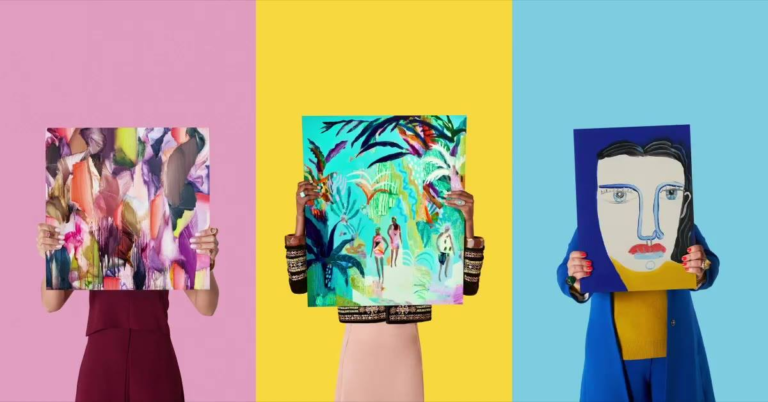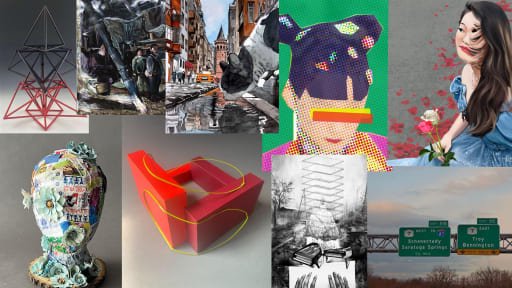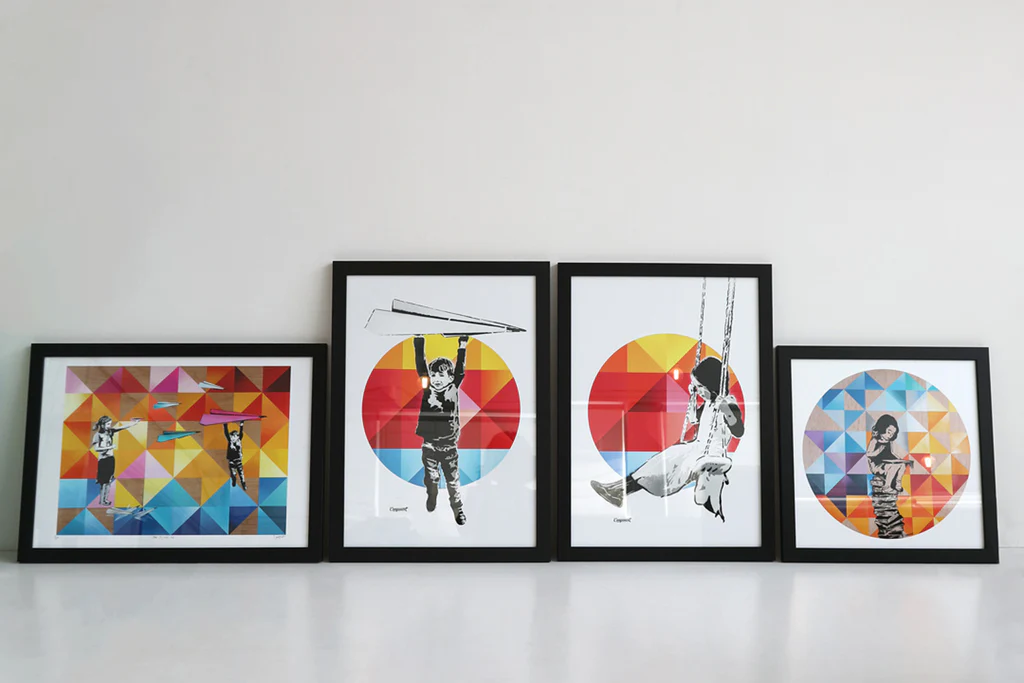In today’s digital age, marketing your artwork online is essential for building a successful art career. With so many platforms and strategies at your disposal, it can be overwhelming to know where to start. However, by utilizing the right tools and methods, you can effectively showcase your art, attract potential buyers, and increase your visibility as an artist.
In this guide, we’ll walk you through practical steps to market your artwork online, helping you to expand your audience and sell your creations more effectively.
1. Build a Professional Online Portfolio
A strong online portfolio is the foundation of your digital marketing strategy. It serves as a virtual gallery for your art, showcasing your best pieces and giving potential buyers a glimpse into your style and skill. Here’s how to create an impressive portfolio:
Select Your Best Work
Curate a collection of your strongest pieces to display. Quality over quantity is key. Only include works that align with the aesthetic and message you want to convey.
Create a User-Friendly Website
Invest in a simple, easy-to-navigate website that highlights your art. Many platforms, like Squarespace, Wix, and WordPress, offer customizable templates that are perfect for showcasing your portfolio. Ensure that the website is mobile-friendly and contains key sections, including:
- About: Share your artist statement and background.
- Gallery: A curated collection of your artwork.
- Store: Where buyers can purchase your art (if applicable).
- Contact: For inquiries, commissions, or collaboration requests.
Optimize Your Portfolio for SEO
Search Engine Optimization (SEO) is essential for getting discovered online. Use relevant keywords, such as the medium you work with (e.g., “oil paintings” or “digital art”) and other terms related to your style or genre. This will help your website appear in search engine results when people are looking for artwork like yours.
2. Utilize Social Media to Build Your Brand
Social media platforms are some of the most effective tools for marketing your artwork and building a loyal following. Instagram, Facebook, Pinterest, and Twitter are great platforms for artists to showcase their work. Here’s how to leverage social media for maximum impact:
Instagram: The Visual Platform
Instagram is arguably the most important platform for artists. With its visual-centric focus, it allows you to share high-quality images of your artwork, engage with followers, and build a brand. Here are some tips for Instagram success:
- Post Consistently: Share your work regularly to keep your audience engaged.
- Use Hashtags: Use relevant and popular hashtags like #artwork, #artistsoninstagram, #artcollector, and niche tags specific to your style (e.g., #abstractart, #watercolor).
- Show the Process: Share behind-the-scenes content to connect with your audience. Time-lapse videos, works in progress, and studio tours are all great ways to engage followers.
Facebook & Pinterest
Facebook is ideal for engaging with local audiences and groups, while Pinterest is excellent for showcasing your artwork in an inspirational, shareable format. Pin your art, inspiration, and even process shots to attract a wider audience. Join art-focused Facebook groups and engage with potential buyers or fellow artists.
Engage with Your Audience
Interaction is key on social media. Respond to comments, engage in conversations, and ask for feedback. The more you interact, the more your followers will feel personally connected to you and your art.

3. List Your Artwork on Digital Art Marketplaces
Several online platforms allow artists to sell their work directly to buyers. These marketplaces give you access to a broad audience and can provide an excellent way to generate sales. Here are some popular platforms to consider:
Etsy
Etsy is known for its wide array of handmade goods, including art. Create an Etsy shop to sell original pieces, prints, and even art-related products like stickers or stationery. Etsy’s search features also allow customers to find your work easily through keywords and tags.
Saatchi Art
Saatchi Art is a premier online art gallery where artists can sell original art and prints. It provides a professional, curated marketplace that attracts high-end collectors. Upload your artwork, set prices, and manage your sales all from your artist profile.
ArtStation
ArtStation is a great platform for digital artists, illustrators, and game designers. It allows you to display your work, connect with fellow creatives, and sell digital downloads and prints.
Fine Art America
Fine Art America offers a platform to sell both prints and original artwork. It also offers print-on-demand services, so buyers can purchase your work on canvas, framed prints, or even merchandise like mugs and T-shirts.
4. Create Engaging Content to Promote Your Work
Content marketing is a powerful way to drive interest in your art. By creating valuable content, you can engage your audience while subtly promoting your artwork. Here are a few content ideas:
Blogging
Start a blog on your website to share your creative process, art tips, and industry insights. This helps establish your authority and gives potential buyers a deeper connection to your work.
Video Content
Create videos of your art-making process, time-lapse videos, or even tutorials. Platforms like YouTube and Instagram Stories are excellent for visual content that can show your personality and creativity.
Email Newsletters
Start an email list and send regular updates about new artwork, upcoming exhibitions, or special promotions. This helps you build a dedicated group of followers who are more likely to purchase from you.
5. Collaborate with Influencers and Other Artists
Collaborating with influencers and other artists can help increase your visibility. Partner with bloggers, social media influencers, or even fellow artists for shoutouts, joint projects, or giveaways. This is especially helpful if you’re looking to reach a new, like-minded audience.
6. Offer Limited-Time Discounts or Special Offers
Offering discounts or special promotions can create a sense of urgency and encourage sales. Whether it’s a percentage off for a limited time or a bundle deal for a set of prints, special offers can help push potential buyers to make a purchase.
Conclusion
Marketing your artwork online is no longer optional—it’s essential for gaining visibility and building a successful art career. By developing a professional portfolio, utilizing social media, listing your work on digital art marketplaces, and creating engaging content, you can effectively promote your art to a global audience. Remember, consistency, authenticity, and engagement are key to building an online presence that attracts buyers and fans alike. Keep experimenting with different strategies and stay active to ensure your art gets the recognition it deserves.











